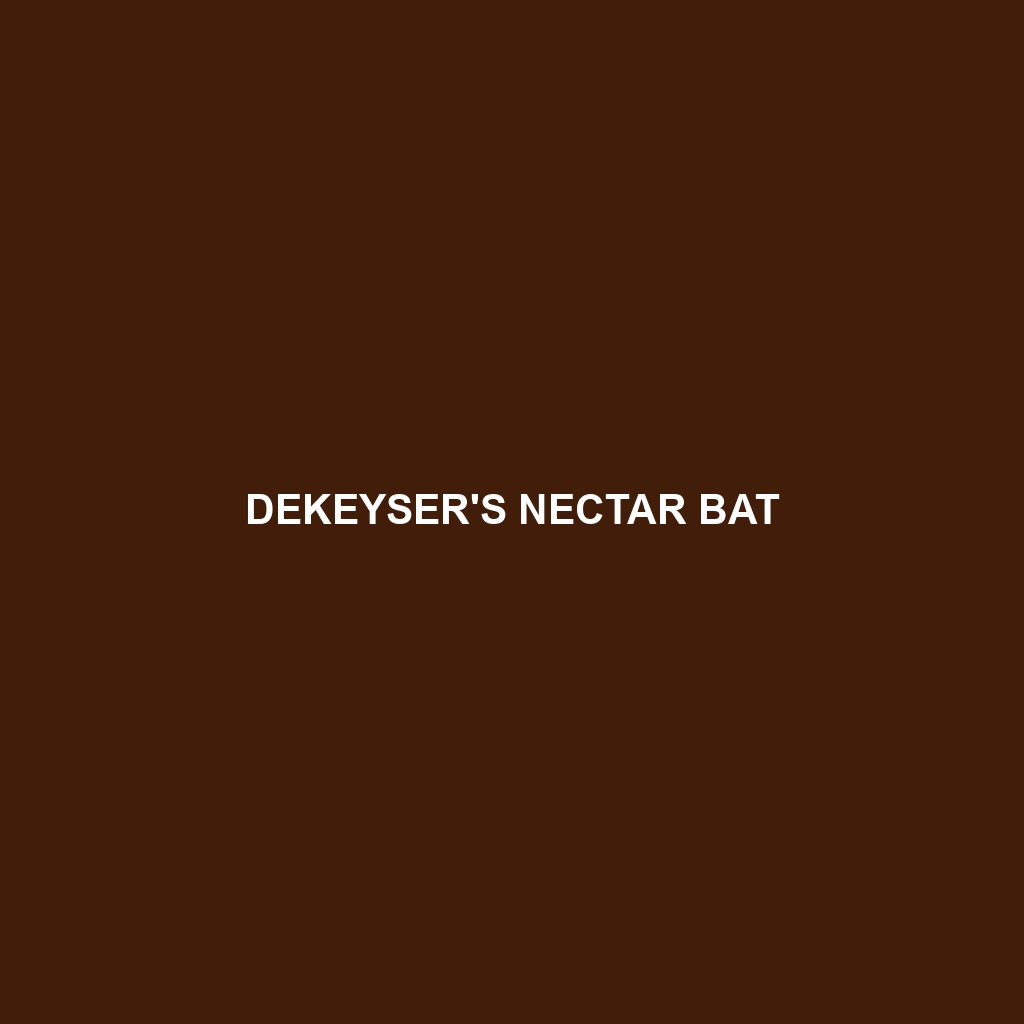Goldman’s Nectar Bat: A Comprehensive Species Description
Common Name: Goldman’s Nectar Bat
Scientific Name: Leptonycteris nivalis
Habitat
Goldman’s Nectar Bat is primarily found in Mexico, particularly in the regions of the Sonoran Desert and Central Mexico. This species thrives in arid and semi-arid environments, often roosting in caves and rocky crevices. The presence of flowering desert plants, such as agave and cacti, marks its preferred habitats, as they provide essential food sources.
Physical Characteristics
This small bat typically measures between 5 to 9 centimeters in body length and possesses a wingspan of approximately 30 to 35 centimeters. Goldman’s Nectar Bat features tan-colored fur with a lighter underbelly. Its long, slender snout and specialized tongue are adaptations that enable it to feed on nectar from flowers. These distinctive features make it easily identifiable among bat species.
Behavior
Goldman’s Nectar Bat exhibits nocturnal behavior, actively foraging at dusk and during the night. The species is known for its remarkable pollination habits, visiting various flowering plants. Its social structure is characterized by forming small colonies, where individuals communicate using chirps and calls. Frequent migration patterns have been observed, aligning with seasonal changes in food availability.
Diet
This species primarily feeds on the nectar of flowers, making it a critical pollinator in its ecosystem. Goldman’s Nectar Bat also consumes fruit and insects, ensuring a diverse diet that supports its energetic lifestyle. The bat’s long tongue enables it to reach deep into flowers to access nectar, aiding in the plant’s reproductive processes.
Reproduction
Goldman’s Nectar Bat has a unique reproductive cycle, typically breeding during the warm months of April to August. Females give birth to a single offspring, known as a pup, after a gestation period of about 90 days. Maternal care is vital, as mothers nurse their young until they are ready to fly and feed independently.
Conservation Status
The current conservation status of Goldman’s Nectar Bat is classified as vulnerable due to habitat loss and declining food sources. Efforts are being made to protect its natural habitat, emphasizing the importance of conservation measures to ensure the survival of this unique species.
Interesting Facts
Goldman’s Nectar Bat is often referred to as an indicator species, meaning its health reflects the overall condition of its environment. Remarkably, this bat can consume its body weight in nectar each night, and its role in pollination is crucial for the survival of several desert plant species.
Role in Ecosystem
As a notable pollinator, Goldman’s Nectar Bat plays an essential role in maintaining the biodiversity of desert ecosystems. By pollinating various plants, it facilitates seed production and helps sustain the habitats of many other wildlife species. Its interactions with flora and fauna highlight the interdependence of life within its ecological community.
